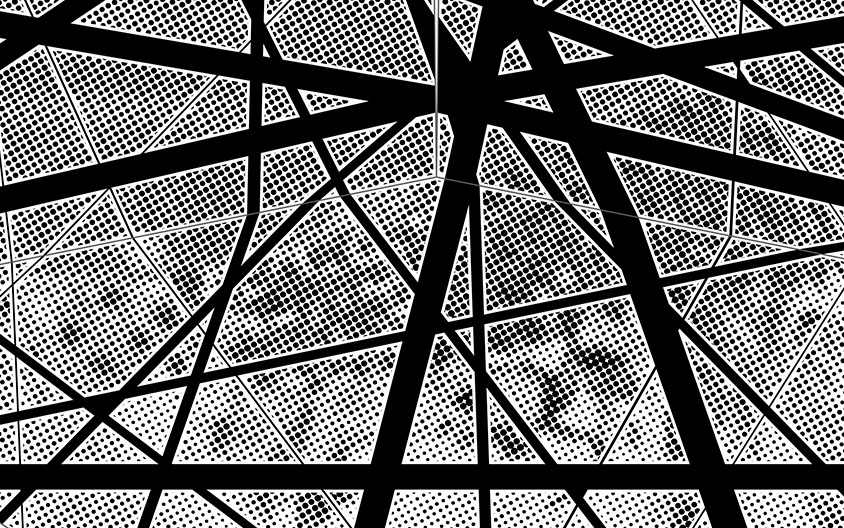Here's a detail view of the panel system we've designed for Kinesthesia Physio in NYC.
Continuous Knot Panelization
We're working on a perforated wall panel system with a continuous knot pattern. Here's a view of four panels and their edge to edge alignment.
Cloudform
I've always been frustrated by the fact that two dimensional projected patterns deform as they map over a given shape rather than respond intelligently to the geometry of the shape. What I wanted to do with Cloudform was to make a script that would map a geometrically consistent pattern on the surface of a complex form. It is simple in concept, harder in execution. After a bit of thought I realized the problem could be solved in a way similar to how faces are mapped in animation. By projecting a two dimensional pattern onto a topologically identical but flattened version of the form, then reassembling the form, the pattern actually folds with the form rather than distorts around it.
Original Music Workshop Brooklyn
After more than two years of work we have finally begun construction on our biggest project to date, the 15 million dollar Original Music Workshop (OMW) in Williamsburg, Brooklyn.
Surface Perforation Detail
Performance Hall Interior Unfolded
This unfolded drawing shows the complete interior surface of the performance hall we are designing. The black lines will be steel channels that house all infrastructure and the surface panels will be acoustically transparent, perforated aluminum.
Perforation Studies Using Wolford
Wolford is a MEL script I wrote that produces geometric
primitives that contain a reciprocal relationship between form and
perforation. The above renderings show a Wankel inspired torus with two
slightly varied strategies. The left form has perforation with a bit of randomization whereas the right form is a consistent perforation based on the surface geometry.
Form Based Perforation Studies
I'm working on a MEL script that perforates a surface proportionately to its geometry.
Perforated Surfaces
This is basic, but useful. While messing around in Maya, I kind of reverse engineered the manner that subdivisions can be attached to one another to create larger more complex topologies. By using the principles for aggregation in reverse, this technique allows you to create geometrically resolved perforated surfaces. The above image shows a simple case: Create a polygon surface, extrude all the faces in plane but with an offset, delete the new faces, and convert to a subdivision surface. This can be done selectively or in more complex scenarios to produce topologically singular perforated surfaces.







